Bachstr. 2 (previously Hauptstr. 45)
The Stumbling Stones are located on Hauptstraße (north side), east of the intersection with Bachstraße.
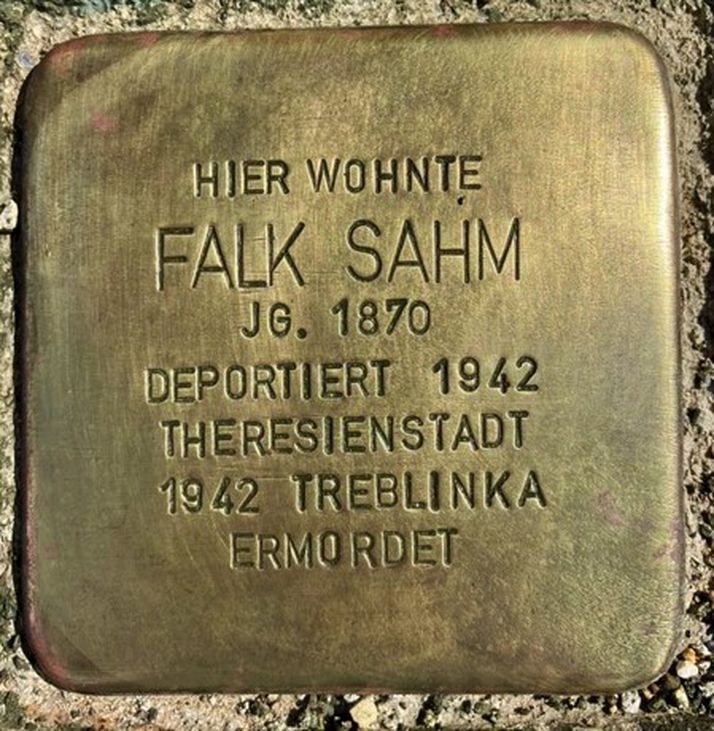
Braunsbach, located in the lovely valley of the Kocher River, had a Jewish tradition that dates back to the early 17th century. In 1843, almost 300 Jewish people lived in the village. After that time some of the Jewish residents emigrated, their numbers being comparable to many other rural Jewish communities. Most of Braunsbach’s Jewish residents traditionally worked as cattle dealers, grocers or merchants. The town was a center of Jewish life: since 1823 it was the seat of a district Rabbinate, since 1834 there was a Jewish elementary school.
Family Background
Falk Sahm was born in Braunsbach on May 6, 1870. He had three older and four younger siblings, his father, Salomon (Salmann) Löw (Löb) Sahm (1831-1893) was a cattle dealer, his mother Nanette, née Bernheimer (1833-1897), was a housewife. The family name ‘Sahm’ was common in Braunsbach, Falk even had a ‘namesake’ who was two years younger; this would later lead to all kinds of confusion in documents. The lives of the eight children of Nanette and Salomon Sahm are typical for a Jewish family in a rural area at that time. Falk’s eldest brother, Bernhard, born in 1861, is an example of social advancement through education: Bernhard studied at the teacher training college in Esslingen and after a two-year stay in New York worked as a teacher in Hohebach and Öhringen, where he died in 1916. Falk’s brothers Maier and Jakob emigrated to the United States. His sisters Jetta, Regine and Gütele died young during the 19th century, which is the reason why only Falk’s youngest sister Lina (Leah) Sahm lived in Germany after 1916. We do not know anything about his first thirty years of life, only a document from 1904 gives an indication that he was a peddler of ‘Ellenwaren’. This was the term used for uncut bales of fabric that he sold to his customers in the area surrounding Braunsbach.
The Question About Paternity
Kocherstetten, located about 9 km from Braunsbach, is a town where Falk stopped regularly and where he also had customers like a mother and daughter named ‘Sch.’. Johanna Sch., the daughter, was 21 years old, single, Protestant and a seamstress. Because it was difficult at that time for many young women to obtain birth control, Johanna became pregnant and in March 1904 gave birth to a girl who was baptized Emma. A court trial was held in December to determine who the child’s father was and therefore would be required to pay alimony. In addition to Leonhard K., a single bricklayer, Falk Sahm also came under suspicion and had to defend himself against gossip: “I never had sex with the child’s mother, not even at the time of conception. However, I often went to the house of Johanna Sch.’s mother. When I stopped at the Oxen Inn afterwards, the innkeeper often teased me if I had something going on with the child’s mother. Depending on the presence of the guests, I said yes or no.” That is how his statement was recorded in the minutes of the trial. Johanna Sch. and Falk Sahm swore that they had had no sexual relations and the court then ordered Leonhard K. to pay the alimony.
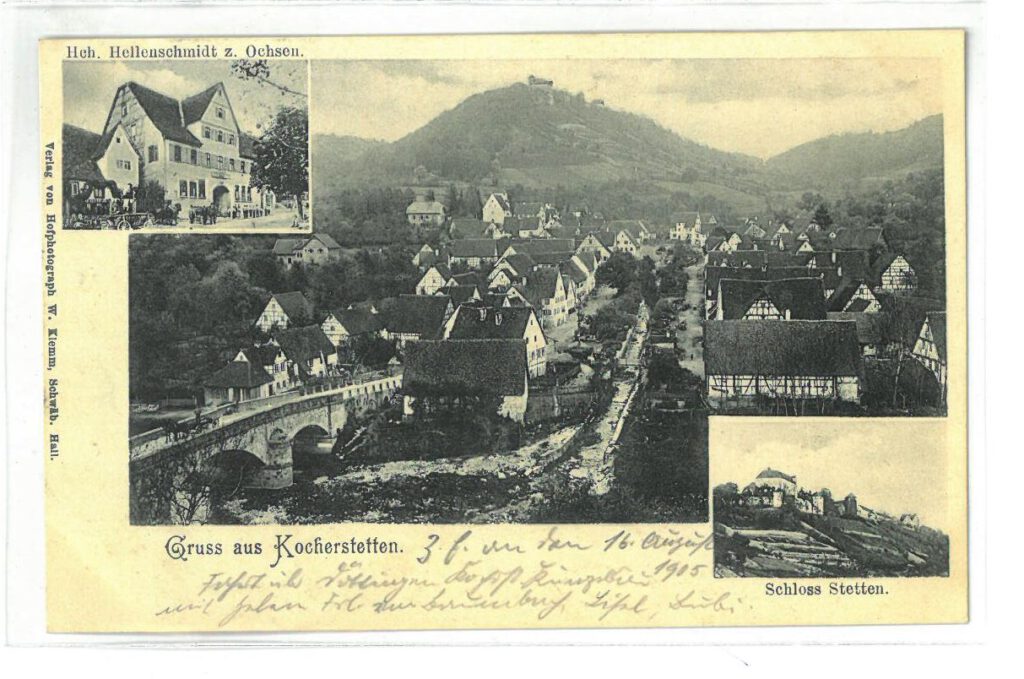
Göppingen: A New Phase in Life
Around 1904 Falk Sahm must have moved to Göppingen. In one document he is referred to as a ‘factory worker’. There is no evidence that he lived permanently in Göppingen from that year on. He was first listed in the Göppingen address books in 1912 as a ‘factory worker’ whose address was given as Grabenstrasse 35. In the address book of 1914 he appears with the same job title but with a new place of residence at Fischstrasse 5. What prompted Falk Sahm to move to Göppingen? Falk’s mother Nanette Sahm née Bernheimer (1833-1897) and a Jewish family by the same name also had lived in Göppingen. However, no family ties to the Göppingen Bernheimers could be established and the reason for his choice to move to Göppingen remains open.
A Schlemiel?
Falk Sahm’s life in Göppingen was unpleasantly interrupted in 1910: the past, more precisely, the paternity court trial from 1904 caught up with him again. In December 1910, he was taken into custody after a decision by the Schwäbisch Hall District Court, the reason being: suspected perjury. From pre-trial detention, he was then admitted to the Winnental (Winnenden) mental hospital, where he was placed as a ‘ward of the state’. Since there is only one document available, questions remain unanswered: did the judge have doubts about Falk Sahm’s liability and therefore had him committed to a psychiatric institution? Had Falk Sahm acted accordingly to avoid a guilty verdict? In the medical records it was noted that “Sahm is an extremely mentally limited person”. However, despite this diagnosis Falk Sahm was convicted of perjury on May 9, 1911. At the beginning of August of that year, he was released from the Schwäbisch Hall prison. He was imprisoned for a total of eight months, but Johanna Sch. was only imprisoned for four months in the women’s prison in Gotteszell / Schwäbisch Gmünd. She had also been convicted of perjury dating back to the trial in 1904. Emma Sch., the alleged daughter of Falk Sahm and Johanna Sch., died single and childless in 1962.
As a Worker in the Horse and Cattle Trade
Falk Sahm had worked as a traveling salesman in Braunsbach, then initially as a factory worker in Göppingen. During the following years he worked for a Göppingen cattle and horse trading company, Sinn & Fleischer Bros. in Gartenstr. 2, whose owners were members of the Jewish community. The nature of his work there has not been handed down; the death of the partner Moritz Fleischer in 1918 or the death of Theodor Sinn in 1923 could be considered as a reason. Theodor’s widow Lotte Sinn, who continued to run the company, must have needed help. During his time in Göppingen, Falk Sahm was not involved in the Israelite community and its associations, at least he is never mentioned in Rabbi Aron Tänzer’s book ‘The History of the Jews in Jebenhausen and Göppingen’.
Lotte Sinn, Falk Sahm’s Göppingen employer, probably retired in the late 1920s and he must have had to look for a new job. He remained in the same type of work and moved to Süßen, County Göppingen, in April 1929, where he worked for a Jewish cattle dealer named Leopold Lang and also lived in Lang’s house at Hindenburgstraße 45.
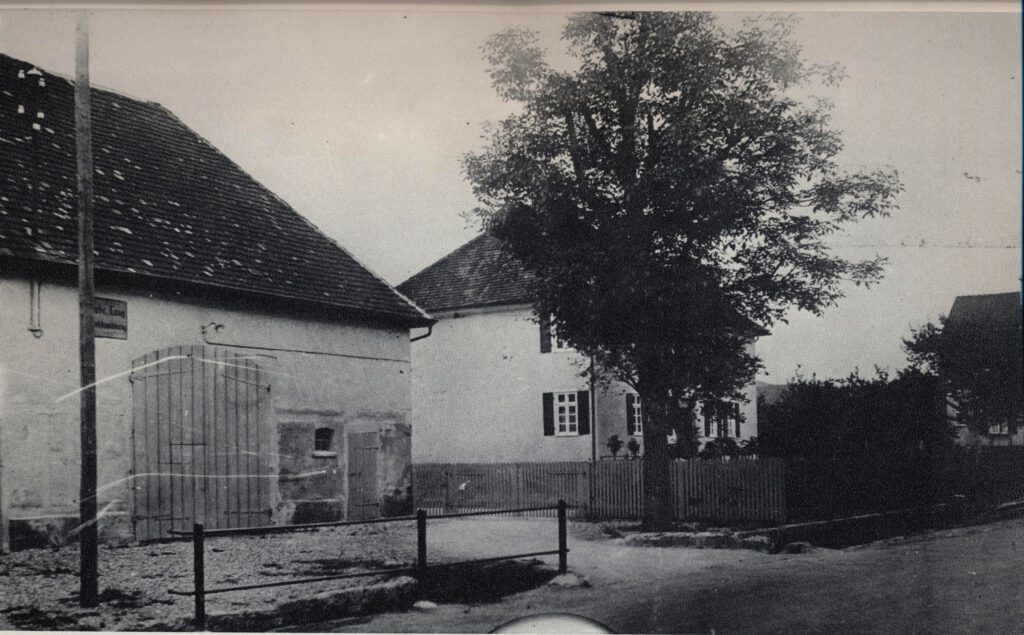
Residential house with barn, around 1930 (Photo: Süßen City Archive)
Leopold and his brother Louis (Lazarus) Lang had a successful cattle trading company in the rural community of Süßen since 1925. Other Jewish families also lived there. Unfortunately, almost nothing has survived about Falk Sahm’s time in Süßen. He is also not mentioned in the memories of the Lang families. On June 1, 1935, shortly after his 65th birthday, he received a disability pension in accordance with the Reichsversicherungsordnung (State insurance decree) in the amount of Reichsmark (RM) 442.80 a year. Until he left Süßen, however, he must have continued to work in order to increase the low amount of the pension. The term ‘disability pension’ at that time meant the same as old-age pension.
A Refuge and Two Forced Retirement Homes
In the middle of 1937, Falk Sahm wanted to or had to retire permanently. His poverty must have been so obvious that on May 28 the Süßen city council “gave the social pensioner Falk Sahm a monthly stipend of 13 RM 10 Rpf.” However, this additional benefit could not be taken for granted; other institutions of the Nazi state cut or refused Jewish Germans the social benefits to which they were entitled. Falk Sahm must have wondered where he should live during his retirement. Staying in Süßen didn’t seem like a good choice. Maybe he was already considering moving to his brother Jakob in the USA, but before that he was probably looking for a good place to stay in Germany.
The ‘Wilhelmsruhe’ in Sontheim Near Heilbronn
Falk’s choice fell on the Jewish retirement home ‘Wilhelmsruhe’ in Sontheim near Heilbronn, where he was registered from July 6, 1937 on. The retirement home, founded in 1907 as an ‘Israelite country asylum’, was originally considered an exemplary facility, the name ‘Wilhelmsruhe’ had been approved by the then King of Württemberg, Wilhelm II. In the early years of the Nazi dictatorship, the demand for openings in retirement homes increased. In many families, the younger generation had already fled abroad and the retired, often single seniors looked for a place of retirement at the ‘Wilhelmsruhe’. The fact that Falk Sahm was able to stay there can be considered a stroke of luck. A few months after him, for example, Bertha Tänzer, the widow of Göppingen Rabbi Dr. Aron Tänzer, moved to the ‘Wilhelmsruhe’, and in letters to her children she praised the quality of the facility. While Mrs. Tänzer was able to live in a single room as a ‘private payer’, the penniless Falk Sahm may have been in a double room. The fact that Falk’s unmarried sister Lina Sahm had also been living there since March 1931 may have influenced his choice of ‘Wilhelmsruhe’ as a retirement home. Besides Mrs. Tänzer, he may have met some other acquaintances there: since 1933 the Löwensteins, a couple from Göppingen, had lived there. In March 1939 another Göppingen couple, the Kirchhausens, had moved there as well. Leopold Schlachter from Falk’s birth place of Braunsbach also came there. The rather pleasant life at the home was brutally interrupted on the Pogrom Night of November 9-10, 1938, when Nazi SA men from Heilbronn stormed the building, abused staff members and caused a lot of damage to the building. After this raid many residents must no longer have felt safe in their retirement home. Matters were made worse with he arrival of other people in 1939, and the facility soon became overcrowded. On November 18, 1940, all residents and nursing staff were forced to leave the ‘Wilhelmsruhe’ and the Nazi regime requisitioned the buildings. Some of the Jewish residents initially returned to their hometowns, provided that there were still relatives living there with whom they could stay. This was not the case with Falk Sahm, he moved together with four more inhabitants of the senior citizens home in November 22, 1940 to Berlichingen on the Jagst where the newcomers possibly were put up with local Jewish families. Falk’s sister Lina, however, was deported to the Buttenhausen ghetto.
The Jewish Retirement Home in Herrlingen Near Ulm
Falk Sahm probably lived in Berlichingen for about nine months. From August 14, 1941, the Jewish retirement home in Herrlingen became his new residence. Golda Rewsin also was taken there on April 2 of that year. Did Falk move to Herrlingen voluntarily? This question cannot be answered with certainty because we do not have information about his stay in Berlichingen. In general, the Nazi regime intensified its efforts to ‘make communities free of Jews’ in mid-1941. In Göppingen, this coercive measure affected the sisters Rosa Fleischer and Emilie Goldstein, who had found refuge with relatives there. They had to move to the Herrlingen Jewish retirement home, where they arrived on August 14, 1941. (see Stolperstein – biographies). Falk Sahm, who must have known the two ladies from the ‘Wilhelmsruhe’, came to the Herrlingen home on the same day. So it can be concluded that he was also taken there against his will. Ulrich Seemüller, who documented the history of the home in his book ‘The Jewish Retirement Home in Herrlingen and the Fates of Its Residents’, quotes a document on Falk Sahm: “In order to pay for his meals, he had to turn over his disability pension of around 37 Reichsmarks to the Jewish Cultural Association. 71-year-old Falk Sahm wanted to follow his brother Jakob, who had emigrated to America,… “. This plan became impossible with the emigration ban for Jews on October 23, 1941. He had no chance to escape the Nazi murder plans.
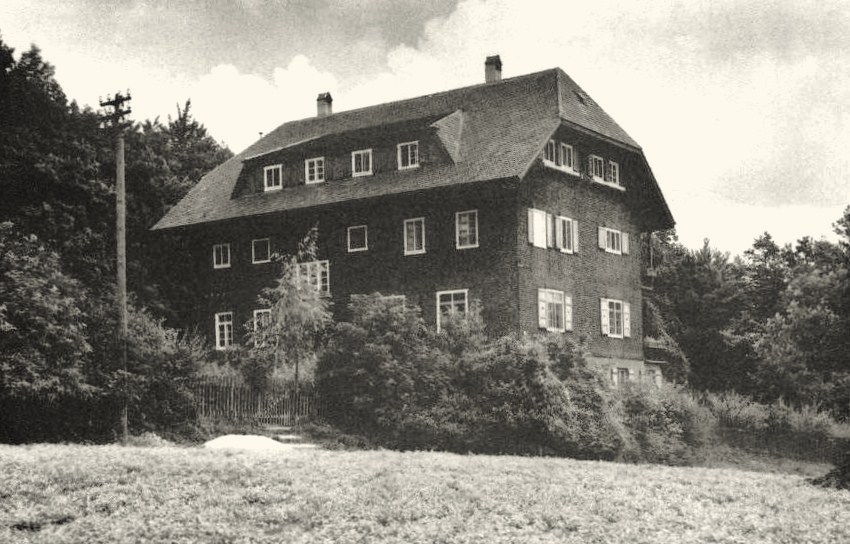
The Jewish retirement home in Herrlingen, which had been established in the summer of 1939, at first still appeared to be a well-run ‘normal’ retirement home: pleasant spacious rooms and a large number of caring staff. It was also initially possible for the residents to move out of the home again. Even though the home was formally operated by the Israelite High Council, the institutions of the Nazi state had all the power to dictate the living conditions of staff and residents. When Falk Sahm arrived in Herrlingen in August 1941, little remained of the once good conditions there. Comparison of the occupancy rates makes this clear: at the end of 1939 there were almost 70 residents in the home, in October 1941, 93 people had to share the same rooms. Added to this was the increasing difficulty to obtain food because the Nazis had restricted the food allocation for Jewish citizens. As the war continued they were prohibited from buying fish, meat, eggs, dairy products, fruit and vegetables. However, the committed and courageous (Jewish) managers of the home were able to provide sufficient food by keeping rabbits and growing vegetables on their own land. Another compulsory measure in January 1942 also affected Falk Sahm: in a raid, the Gestapo instructed the police to search the retirement home for winter clothing and other winter equipment and to confiscate what was found. The ‘yield’ was considerable, the loss for the residents was immense.
The Forced Retirement Home in Oberstotzingen Castle
Since the summer of 1941, the city and district of Ulm set the goal of driving the remaining Jews out of the city and of forcing them, together with the residents of the Herrlingen retirement home, into a remote location. With this approach, the Nazis wanted to gain valuable living space. The city of Ulm wanted to continue using the Herrlingen buildings as a retirement home, but only for ‘Aryan’ seniors. The dilapidated, only partially inhabited Oberstotzingen Castle seemed to the Nazis to be a suitable place for a forced relocation.
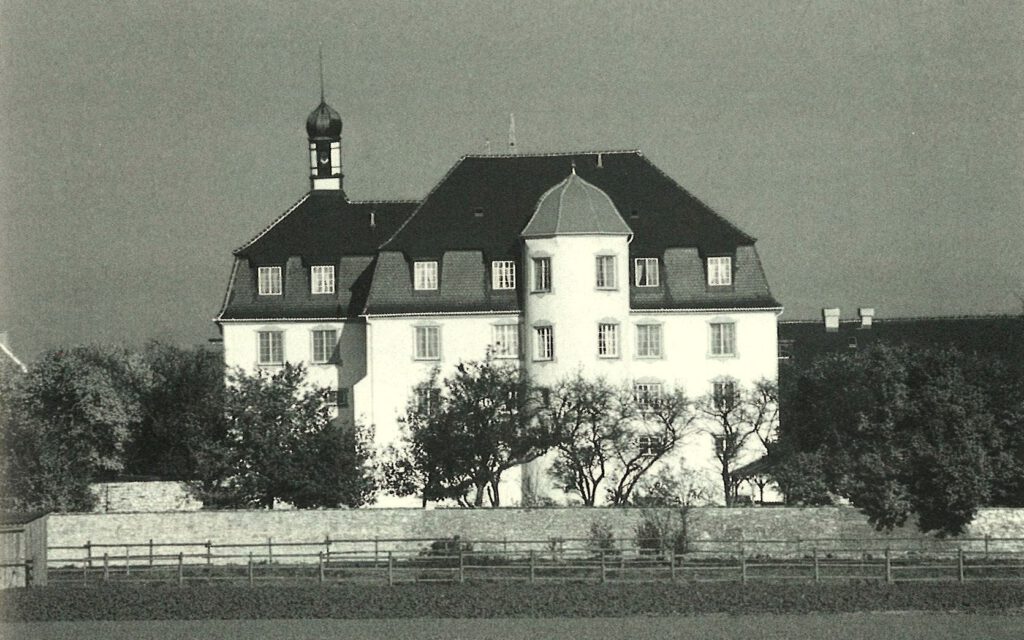
In December 1941, a contract between the municipality of Oberstotzingen and the castle’s owner, Count von Maldeghem, to rent the castle was approved, while the city of Ulm agreed to pay for the costs of the repairs. The Nazis even wanted to forego the installation of bathing and washing facilities for the future castle residents, and even measures required by the building authorities were deliberately omitted. In the summer of 1942, the marginal repairs had been completed and the Herrlingen residents were brought to Oberstotzingen in several groups, Falk Sahm on July 9, 1942. Besides the 82 people from the Herrlingen home, nine other people who had previously lived in Ulm were forcibly quartered there.
The Deportation to the Theresienstadt Concentration Camp Ghetto
The forced retirement home in Oberstotzingen Castle only existed until August 18, 1942, because the Nazis had decided to deport all residents of the castle to the Theresienstadt concentration camp. They were taken to Stuttgart in two trains from Niederstotzingen via Ulm. Before they were transported to Theresienstadt, they had to spend one night in the transit camp on Killesberg, where catastrophic conditions existed for the approximately 1,000 people who were kept there. On August 21, the deportation train left Stuttgart Nordbahnhof (Nothern train station). After a 30-hour journey, it reached the Bauschowitz train station, from where the thirsty and hungry deportees had to walk to the Theresienstadt camp with their luggage. At the time of their arrival, the concentration camp was extremely overcrowded. The catastrophic housing and living conditions (food supply, hygiene, medical care, etc.) led to the deaths of almost a third of 82 former Herrlingen seniors during the first few weeks.
Murder in the Treblinka Extermination Camp
Falk Sahm survived these weeks in the Theresienstadt concentration camp. After a month, on September 26, 1942, he was deported again. The destination of the transport with the identification ‘Br’ was the Treblinka extermination camp, located about 120 km northeast of Warsaw. There he was probably suffocated with diesel engine emissions on September 28. He was one of over 800,000 Jews who were murdered there by the German Nazis and their helpers.
On February 16, 2008, Gunter Demnig laid Stumbling Stones in front of the house at former Hauptstr. 45 where Falk Sahm and his murdered employer Leopold Lang and his family had lived.
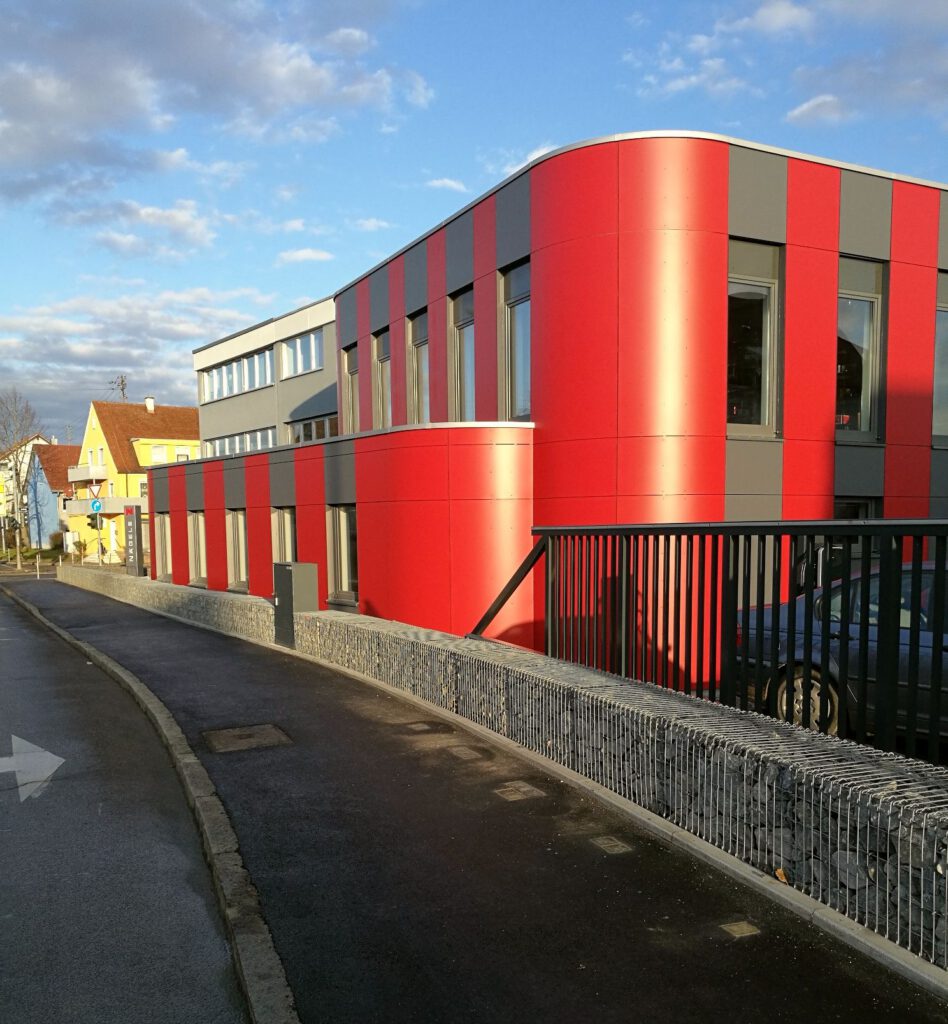
Falk’s sister Lina Sahm, who had worked as a housekeeper, was also murdered. Lina, who lived in the Buttenhausen ghetto in building no. 26 until she was deported, was taken to Theresienstadt concentration camp on the same transport as her brother, as well as to the Treblinka extermination camp. Other victims of the German Nazis were Falk’s niece Bella Thalheimer, née Sahm, and her husband Moritz, who lived in Oberdorf a. Ipf. Bella was a daughter of Falk’s brother Bernhard Sahm. Descendants of his emigrated brother Jakob Sahm (1874-1950), who changed his name to Jake Sam in the United States, live in the United States.
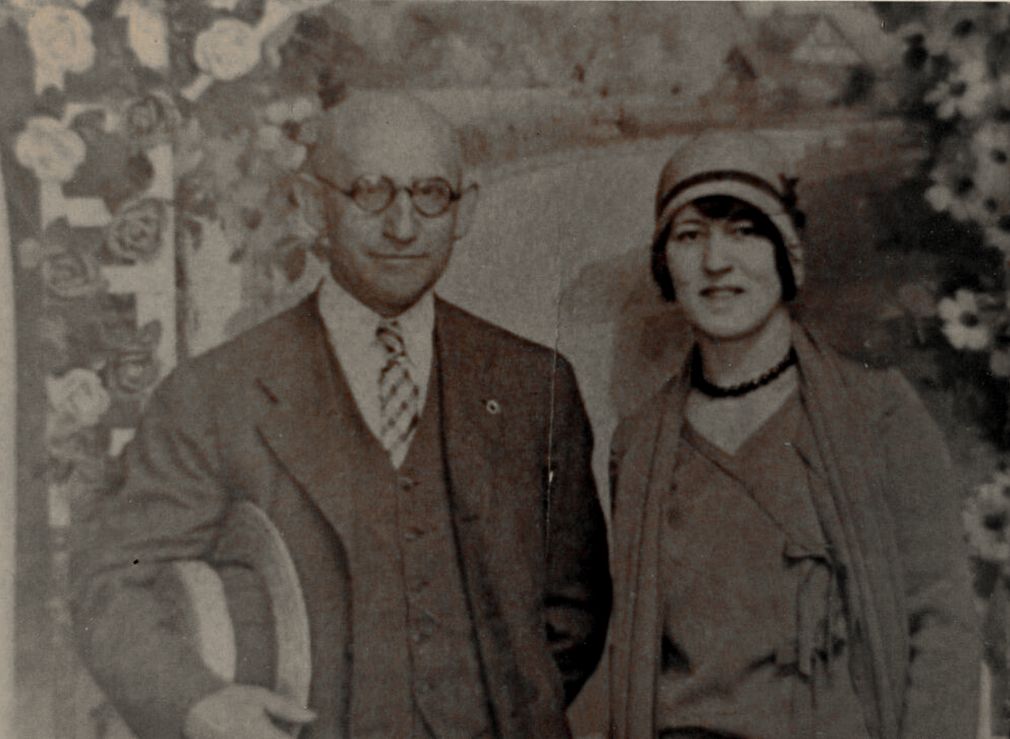
We received a lot of support in researching Falk Sahm’s life. Special thanks go to Ms. Benning from the Ludwigsburg State Archives, Ms. Eberhard from the Süßen City Archives and Ms. Quirbach from the Rabbinical Museum in Braunsbach. We owe a lot of information about the retirement homes in Herrlingen and Oberstotzingen to the book by Ulrich Seemüller mentioned above.
(26.06.2020 kmr / ir)


Leave a Reply